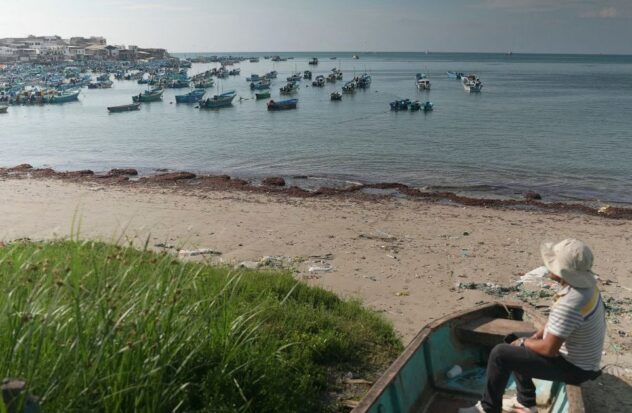QUITO.- Facing an idyllic coastal landscape surrounded by luxurious buildings, the resort of Salinas, in the southwest of Ecuadorhides a war that escapes tourists. Mafias recruited fishermen into drug trafficking under their law of silence and bullets.
“If you complain, you die,” recounted a fisherman 35-year-old who is afraid to give his name for security reasons. He works at the Santa Rosa dock, located in this city of 35,000 inhabitants in the province of Santa Elena.
The atmosphere at the port is absolutely silent. Distrustful glances increase the tension. “We can’t stay here for long,” warned the worried man.
Like others Fishermen from the Pacific coast of Ecuadorwas caught in a wicked dilemma: transport cocaine in exchange for large sums of money or die for refusing to do so.
His barge weaves through dozens of colorful boats that float alongside the dock, before disappearing into the open sea.
Salinas is located 150 kilometers west of Guayaquilthe country’s main commercial port and the epicenter of clashes between gangs fighting for drug trafficking routes to the United States and Europe.
Peace reigned in Ecuador until a few years ago, but today the country is bleeding to death, with record levels of violence. Homicides rose from 6 per 100,000 inhabitants in 2018 to a record of 47 per 100,000 in 2023.
“Artisanal” traffic
Santa Elena is a political stronghold and the personal residence of the President Daniel Noboa. Since coming to power in 2023, the president has been on a war without quarter against drug traffickingwhich in turn is strengthened in a nation located between Colombia and Peru, the largest cocaine producers in the world.
Unlike Guayaquil, where drugs leave by the tonne in large containers, in Santa Elena trafficking to the Pacific Ocean is done “in a more artisanal way”, says Glaeldys González, Crisis Group researcher for Ecuador.
“They do it using fishing boats”although also larger vessels, semi-submersibles “and even submarines,” says Boris Rodas, a Navy captain who commands the area.
Most of the drugs go to Central America, where they are stockpiled before being sent to the United States.
Organized crime threatens fishermen in hundreds of small towns that are “strategic exit points” to the sea, according to González.
Santa Elena is home to Los Choneros, one of the largest organizations in the country, and other gangs with less influence in the area such as Los Lagartos, Los Tiguerones, Los Chone Killers and even Los Lobos.
“Silver or lead”
“We never know who hires us. There are intermediaries and we never meet the boss,” the fisherman assures.
For them, transporting cocaine brings in around $10,000 per shipment, a figure that is difficult to reject in a trade where scarcity prevails.
There are not as many fish as before and the little profits collected are being wasted “on boat repair costs,” laments another fisherman, also on condition of anonymity.
Drug traffickers take advantage of locals “mainly for their knowledge of the sea” and weather conditionsexplains Gonzalez.
But this dynamic is far from being a free exchange. “These people and their families are threatened” by armed actors, added the expert, who adopted the maxim of the slain Colombian drug lord Pablo Escobar: “Money or lead.”
“Half the money is paid before we leave and the other half when we return to port with the work done,” says the fisherman from the Santa Rosa dock, although he admits that they often only receive a fraction of what was agreed upon. The claim could mean death.
Crossfire
“A few days ago, a man who was a fisherman was killed”the navigator said in a low voice. Everyone knows it, but no one wants to talk about it.
Offshore, gangs fight over routes, just as they do on land. A few days ago, a group of fishermen found a decapitated corpse in the water. “When (rival gangs) meet at sea, they fill each other with lead,” he said.
Fishermen also fall into the crossfireaccused by some organization of collaborating with their adversaries.
Caught between a rock and a hard place, they agree to pay extortion to criminal groups in exchange for supposed security.
In April 2023, in Esmeraldas (northwest Ecuador), around thirty gunmen opened fire in a small fishing port, killing nine people. The bloody attack was recorded on security cameras.
Although Noboa declared an internal armed conflict in January and has military personnel deployed on the streets and in prisons, the violence has not subsided. In the first four months of the year alone, some 1,900 homicides were recorded, compared to 8,004 in all of 2023.
Source: With information from AFP

